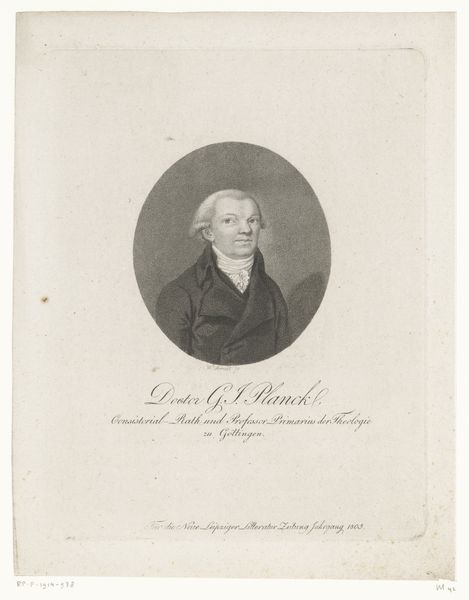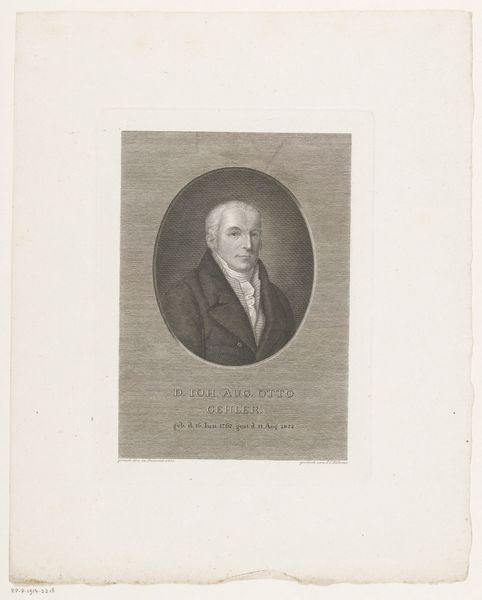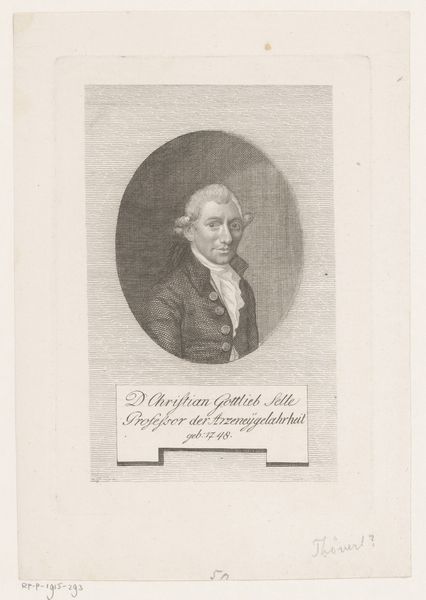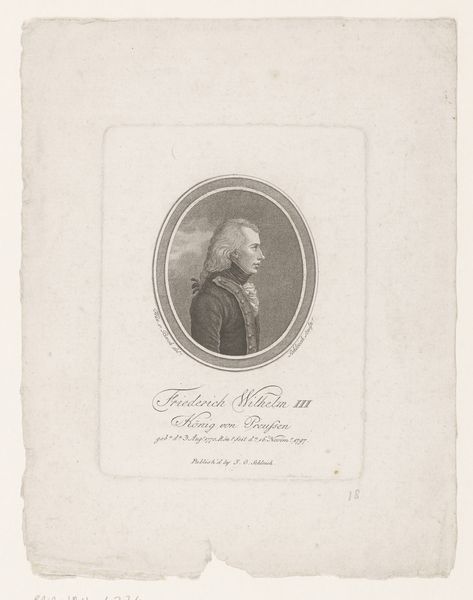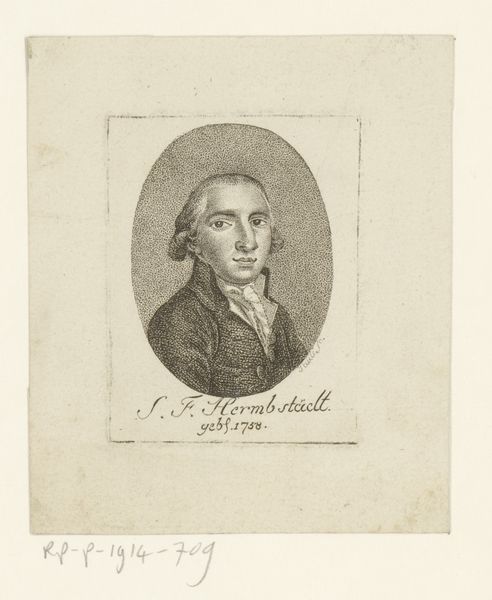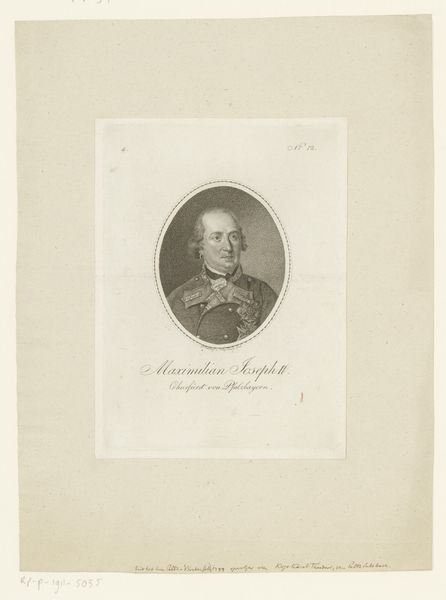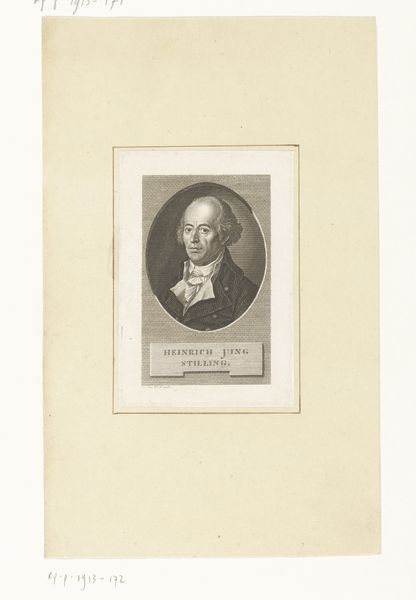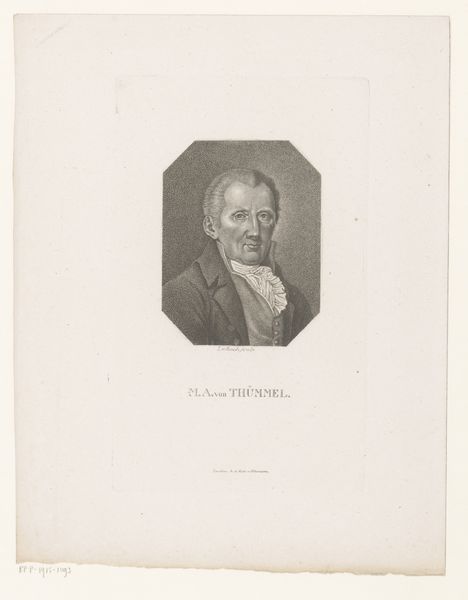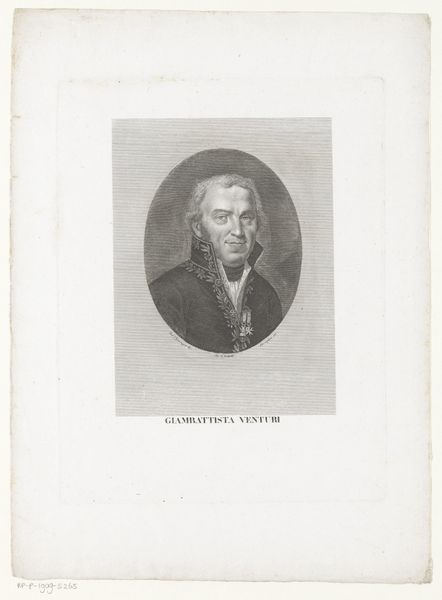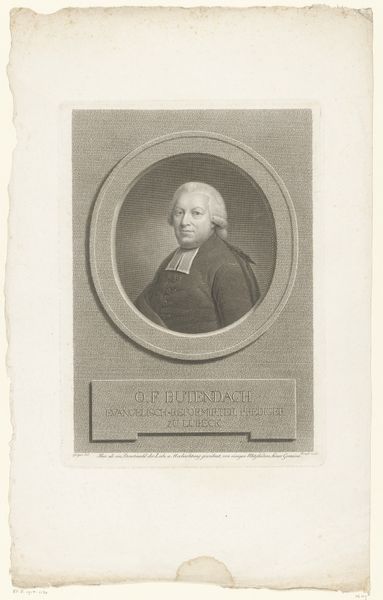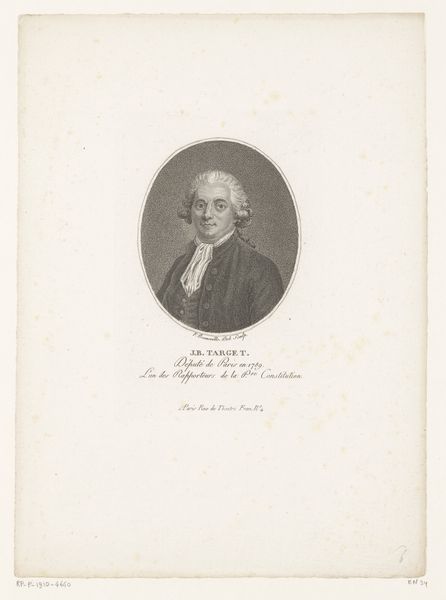
Dimensions: height 165 mm, width 101 mm
Copyright: Rijks Museum: Open Domain
Curator: This is a print, a portrait of Christian Gottlieb Selle, crafted between 1787 and 1836. It’s currently part of the Rijksmuseum collection. The piece is attributed to Johann Friedrich Bolt. Editor: It has an air of austere calm, doesn’t it? Like a sepia dream distilled onto paper. There’s an old soul staring out from within that oval frame. Curator: Oval portraits were highly fashionable during that period. Selle was likely a person of some status or intellectual standing to warrant such a commission. It’s also interesting to consider the implications of monochrome prints like this in a society where color printing was not widely accessible. Editor: Yes, the absence of color does pull focus. The man looks directly at you; the intensity feels so sharp. What strikes me is the almost uncanny valley effect of the detail, rendered so meticulously, yet still not entirely "real." Did they intentionally make the portrait like this, or was it a challenge of the printing technique? Curator: Early reproductive prints such as engravings and etchings sought to provide affordable alternatives to paintings. Bolt would’ve skillfully translated the visual likeness of Selle into a series of lines and marks, meticulously capturing the textures of his jacket and wig. There was a complex network of printmakers who actively shaped how individuals perceived notable figures like Selle and democratized art during this era. Editor: So, art as a vehicle for something grander than just artistic pleasure, like propagating ideals. Still, there is something so powerful in art produced without technology that I do not feel nowadays; art that is handmade has an incredible personal aspect that you feel every time you see the artwork in question. Curator: Absolutely. This print encapsulates not just the image of an individual but also represents the social function and possibilities of artmaking and cultural dissemination. Editor: It reminds me of the impermanence of images, especially printed ones that can fade over time. Despite that, there is something lovely in those little traces of wear that turn into a personal history. Curator: I agree, perhaps why museums conserve prints so diligently!
Comments
No comments
Be the first to comment and join the conversation on the ultimate creative platform.
